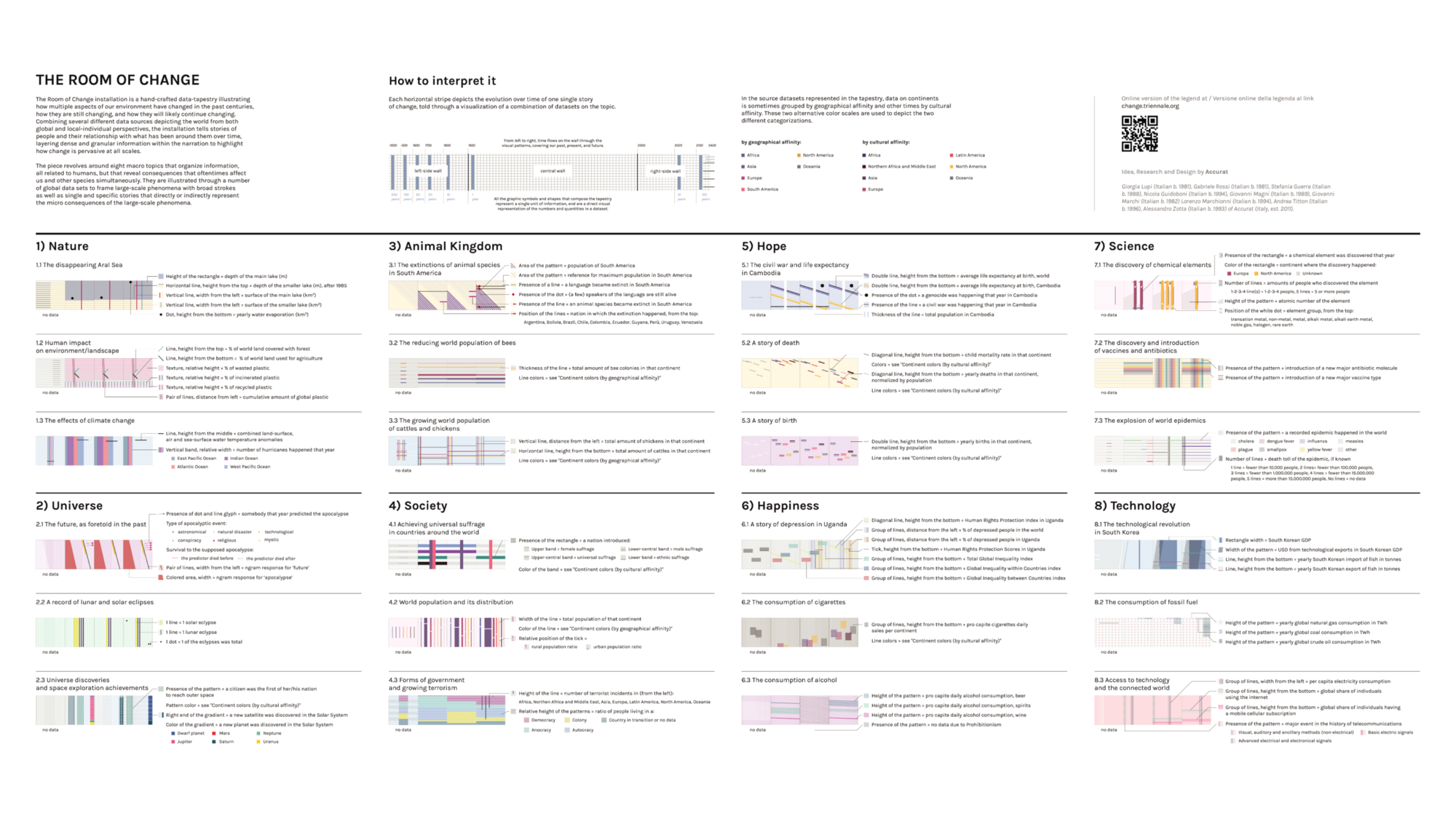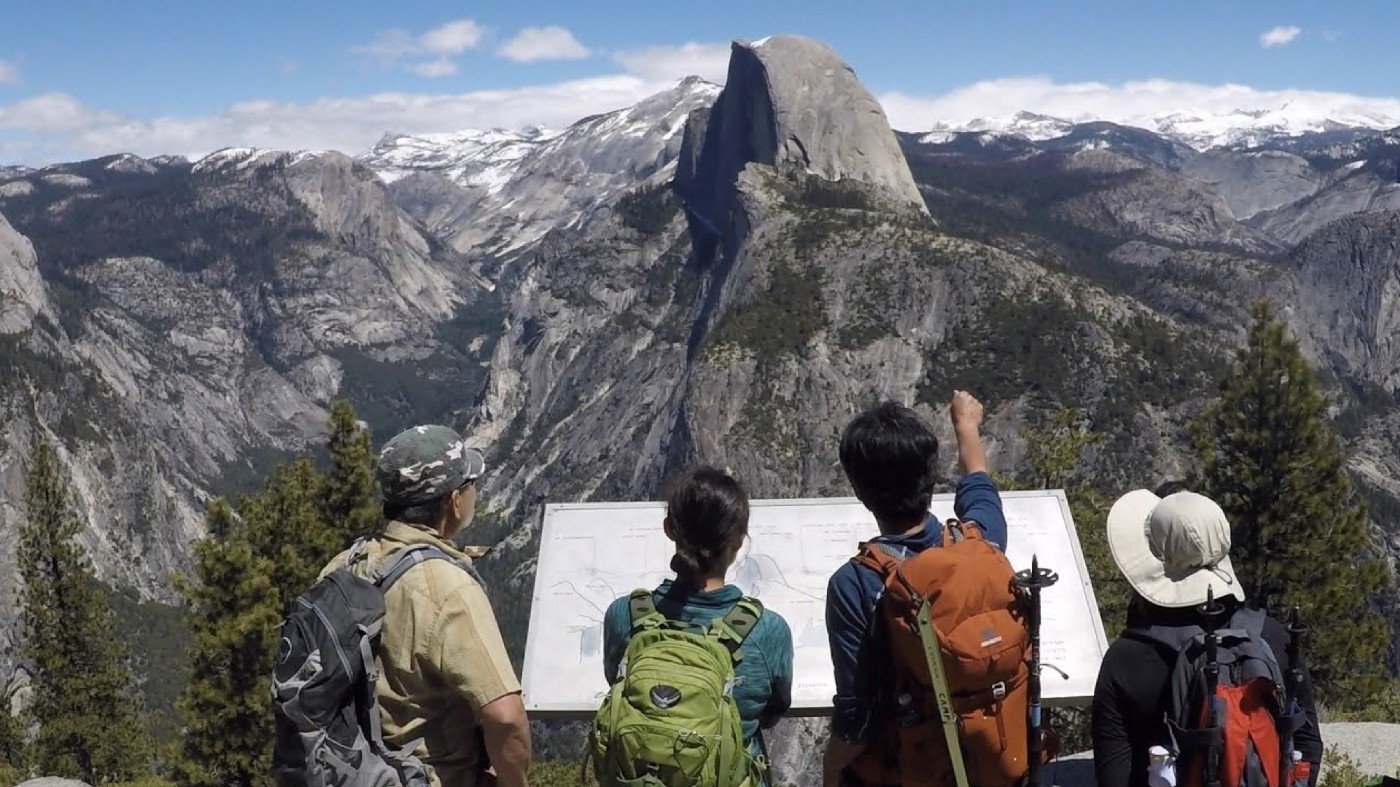
Two years ago this month, we were commissioned to create a piece for the Triennale Milano XXII. Titled Broken Nature: Design Takes on Human Survival, the 2019 edition showcased imaginative solutions for navigating a new world affected by climate change. Our contribution — The Room of Change — was a 100–foot long data visualization “tapestry” that covered the walls of the gallery. In the same space, two large screens projected NASA photography of endangered environments.
Though The Room of Change immersed people into its worldview, the perspective remained incomplete for visitors unless they engaged with a third component: the work’s key for interpretation. As is the case with all data–driven art—wherein objective truths are presented imaginatively, or even abstractly — comprehending the dataviz’ taxonomy was essential to truly “seeing” it.

The Room of Change’s legend elucidated how the intricate wall patterns illustrated the course of human history, and cast the juxtaposition of the satellite imagery into powerful relief. Informed of the meaning of shapes, lines, and symbols; the logic of the layout of information, why the artwork was as it appeared—viewers could fully grasp the moments that make up millennia, and the micro–actions that contribute to geological–scale shifts over time.
Accurat co–founder and Room of Change co–creator Giorgia Lupi described this view as a “privileged perspective” and compared it to the type of pedestal that might be found perched near a scenic vista: the type intended to help people “navigate the big changes in the same way you would look at a mountain range with the help of a navigating map.”

The Room of Change’s legend elucidated how the intricate wall patterns illustrated the course of human history, and cast the juxtaposition of the satellite imagery into powerful relief. Informed of the meaning of shapes, lines, and symbols; the logic of the layout of information, why the artwork was as it appeared—viewers could fully grasp the moments that make up millennia, and the micro–actions that contribute to geological–scale shifts over time.
Accurat co–founder and Room of Change co–creator Giorgia Lupi described this view as a “privileged perspective” and compared it to the type of pedestal that might be found perched near a scenic vista: the type intended to help people “navigate the big changes in the same way you would look at a mountain range with the help of a navigating map.”
This ordinary object served as an inspiration for the legend’s unconventional placement and composition. The shape and size of the structure had the added benefit of encouraging hands–on engagement (literally).


Filling the opening gallery of the exhibition, The Room of Change set a tone, introduced key themes, and contextualized the works that would follow with a timeline that covered the past, present, and future. Visitors could enrich their experience by pausing at the waist–high, unobtrusive structure and learning how to read the writing on the wall, or they could just as easily overlook the helpful text and diagrams as they might a wall panel.

In this way, the legend also functioned as a primer for engaging with the works of Broken Nature, in that it presented visitors with a choice. Climate change is all–encompassing, yet invisible if we turn a blind–eye to science.
The ability to access data and contemplate time while we still have it is, indeed, a “privileged perspective.”